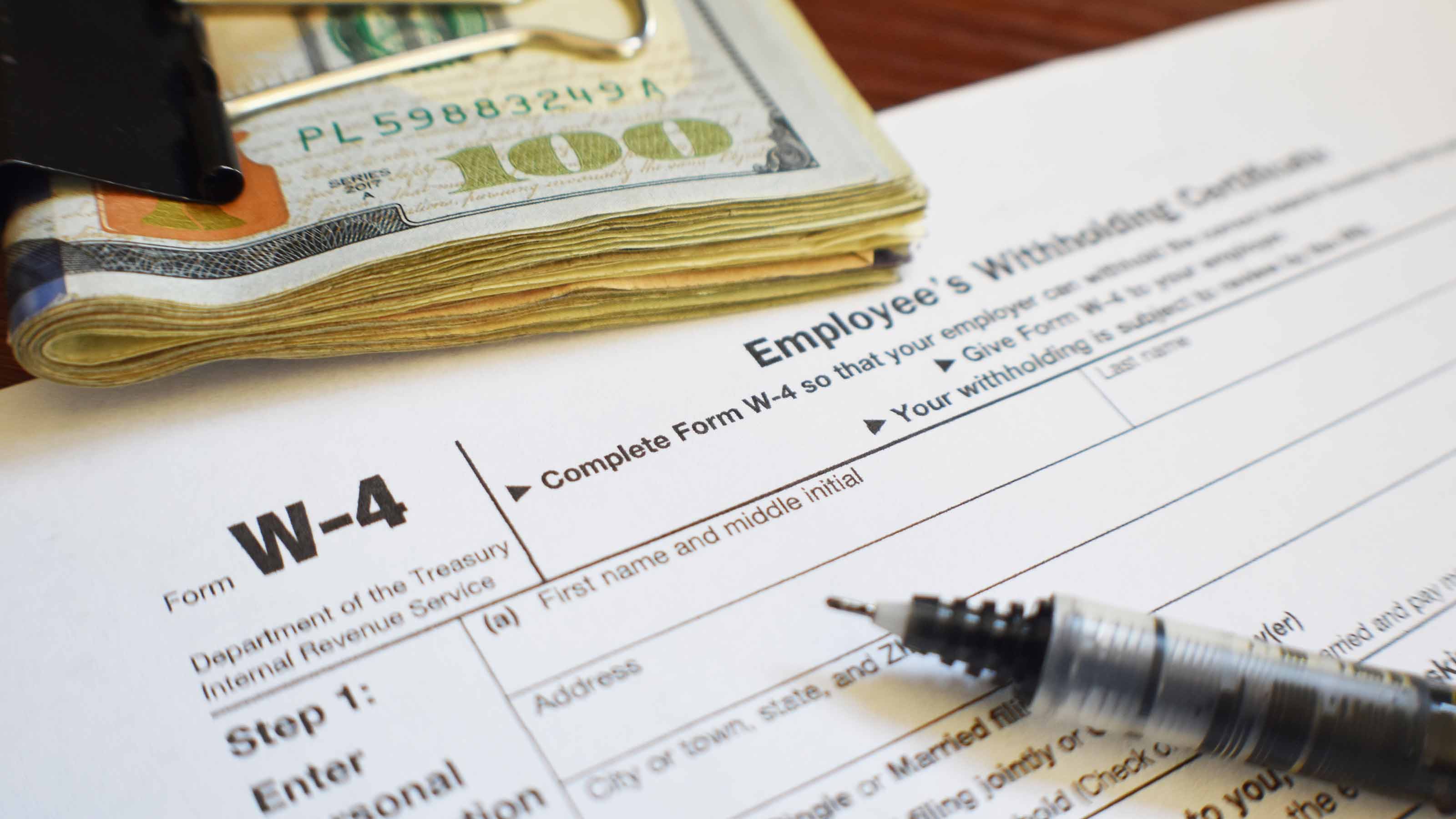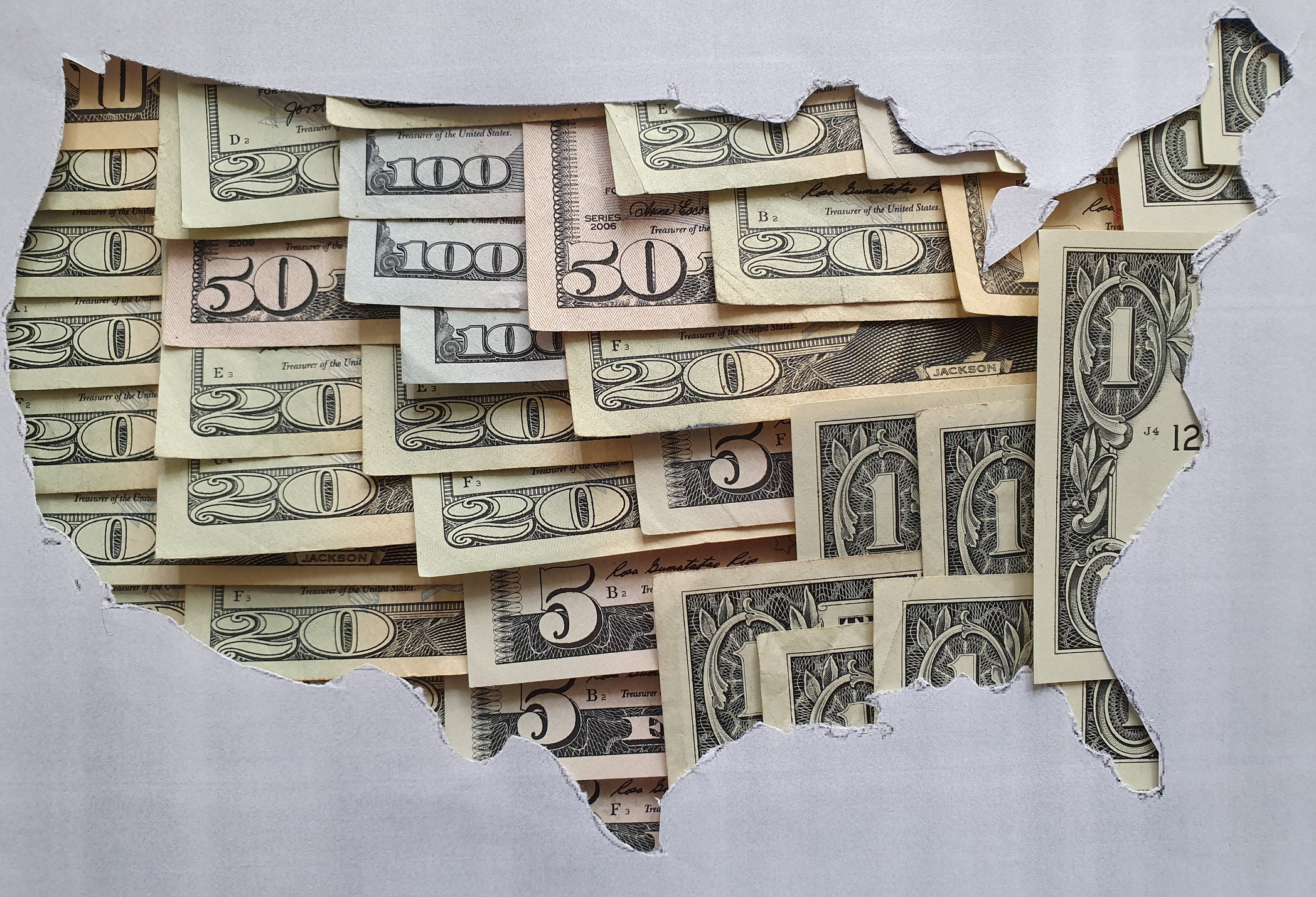Tax Withholding Changes Can Boost Your Paycheck Now and Avoid Penalties Later
There's still time to submit a new Form W-4 to change your tax withholding for the rest of the year.


Do yourself a favor: Look at your last paycheck and see how much federal income tax has been withheld from your wages so far this year. If you've had too much or too little withheld, there's still time to change your tax withholding for the rest of the year (and beyond). But, since you probably only have a couple of pay periods left this year, you need to act as soon as possible to have an impact on your overall 2022 withholding.
Making a change can put more money in your pocket now…or shield you from an IRS penalty later. The goal is to have your annual tax withholding be as close to your overall tax liability for the year. Think like Goldilocks – you want your tax withholding to be "just right."
If you have too much tax withheld during the year, your take-home pay isn't as high as it could be and you're effectively giving Uncle Sam an interest-free loan each pay period (you won't get paid back until you get your next tax refund). Reducing your tax withholding in this case will immediately boost your paycheck (it's like giving yourself a raise). And, yes, next year's tax refund will be smaller…but that just means you're not letting the government hold on to and use your money for a few months (again, without paying interest).

Sign up for Kiplinger’s Free E-Newsletters
Profit and prosper with the best of expert advice on investing, taxes, retirement, personal finance and more - straight to your e-mail.
Profit and prosper with the best of expert advice - straight to your e-mail.
On the other hand, if your employer doesn't withhold at least (1) 90% of the income tax you expect to owe for 2022, or (2) 100% of the tax you paid for 2021 (110% if your 2021 adjusted gross income was more than $150,000), you could be hit with an underpayment penalty when you file your federal tax return next April. Increasing your tax withholding now can help reduce or completely avoid this penalty. It can also lower or prevent a tax bill when you file your federal tax return next year.
File a New W-4 Form to Change Your Tax Withholding
There are many reasons why your tax withholding could be a bit off. Common causes include a marriage, divorce, birth of a child, or home purchase during the year. If it looks like your 2022 tax withholding is going to be too high or too low because of one of these or some other reason, you can submit a new Form W-4 now to increase or decrease your withholding for the rest of the year. Give the new form to your employer and they'll take it from there (check with your HR department to find out exactly who you should send the form to). Your employer must implement any change by the start of the first payroll period ending on or after the 30th day after you submit a new W-4 form for this year.
Although there are five "steps" on the W-4 form, only Step 1 (name, address, Social Security number and filing status) and Step 5 (sign and date) are required for everyone. You only have to complete Steps 2 to 4 if they apply to you (e.g., you have more than one job, a spouse that works, dependents or other adjustments). Completing all relevant steps will bring your tax withholding closer to your tax liability, which (again) is the goal.
If you just want to increase your withholding, one easy way to do this is to specify an extra amount you'd like to have withheld from your paycheck on Line 4(c) of the W-4 form.
IRS's Withholding Tax Calculator
To help you determine if and/or how much to adjust your 2022 withholding, use the IRS's Tax Withholding Estimator as soon as you can. Have your most recent pay stub and a copy of your 2021 tax return handy to help estimate your 2022 income. Again, you must act quickly, since we're almost to the end of the year.
We also recommend using the tax withholding calculator early in 2023 to see if additional adjustments are beneficial going forward. In fact, it's a good idea to check your withholding every year. And the earlier in the year you do it – and make any necessary changes – the better. That way your tax withholding will be more even and accurate throughout the year.
But remember that you aren't required to submit a new W-4 form to your employer unless you're starting a new job. If your company doesn't receive a new form from you, it will just continue to withhold taxes based on the most recent W-4 it has on file for you.
Get Kiplinger Today newsletter — free
Profit and prosper with the best of Kiplinger's advice on investing, taxes, retirement, personal finance and much more. Delivered daily. Enter your email in the box and click Sign Me Up.
Rocky Mengle was a Senior Tax Editor for Kiplinger from October 2018 to January 2023 with more than 20 years of experience covering federal and state tax developments. Before coming to Kiplinger, Rocky worked for Wolters Kluwer Tax & Accounting, and Kleinrock Publishing, where he provided breaking news and guidance for CPAs, tax attorneys, and other tax professionals. He has also been quoted as an expert by USA Today, Forbes, U.S. News & World Report, Reuters, Accounting Today, and other media outlets. Rocky holds a law degree from the University of Connecticut and a B.A. in History from Salisbury University.
-
 Six Reasons to Disinherit Someone and How to Do It
Six Reasons to Disinherit Someone and How to Do ItWhether you're navigating a second marriage, dealing with an estranged relative or leaving your assets to charity, there are reasons to disinherit someone. Here's how.
By Donna LeValley Published
-
 Should You Still Wait Until 70 to Claim Social Security?
Should You Still Wait Until 70 to Claim Social Security?Delaying Social Security until age 70 will increase your benefits. But with shortages ahead, and talk of cuts, is there a case for claiming sooner?
By Evan T. Beach, CFP®, AWMA® Published
-
 Ask the Editor: Taxes, April 11, 2025
Ask the Editor: Taxes, April 11, 2025Ask the Editor In our Ask the Editor series, Joy Taylor, The Kiplinger Tax Letter Editor, answers questions related to IRAs and other retirement accounts.
By Joy Taylor Published
-
 Free IRS Tax Filing for 30 Million People: Will It Continue Under Trump?
Free IRS Tax Filing for 30 Million People: Will It Continue Under Trump?Tax Filing Direct File was piloted last year in 12 states and has since expanded to 25. But some wonder whether the program will last under the Trump administration.
By Gabriella Cruz-Martínez Last updated
-
 How Caregivers for Adults Can Save on Taxes in 2025
How Caregivers for Adults Can Save on Taxes in 2025Tax Breaks Caring for your parent or spouse can be stressful, but the IRS offers tax breaks for qualifying taxpayers. Here they are.
By Kate Schubel Published
-
 Taxpayer Revolt? Why More People Are Avoiding Filing Taxes This Year
Taxpayer Revolt? Why More People Are Avoiding Filing Taxes This YearTax Season It may be tempting to skip filing due to the overwhelmed IRS, but doing so could have financial and legal consequences.
By Kelley R. Taylor Last updated
-
 U.S. Treasury to Eliminate Paper Checks: What It Means for Tax Refunds, Social Security
U.S. Treasury to Eliminate Paper Checks: What It Means for Tax Refunds, Social SecurityTreasury President Trump signed an executive order forcing the federal government to phase out paper check disbursements by the fall.
By Gabriella Cruz-Martínez Published
-
 IRS Layoffs Spark Delays, Doubt This Tax Season
IRS Layoffs Spark Delays, Doubt This Tax SeasonTax Season Tax experts say Trump’s downsizing of the IRS is already causing problems.
By Gabriella Cruz-Martínez Last updated
-
 States with the Highest Income Tax Rates for Retirees
States with the Highest Income Tax Rates for RetireesState Tax You may reconsider living and retiring in one of these states due to high taxes.
By Kate Schubel Last updated
-
 AI Tax Scams Target Middle and Older Adults: What to Know
AI Tax Scams Target Middle and Older Adults: What to KnowScams Whether you’re a retiree or Gen Z, scammers can gouge big financial losses with the help of artificial intelligence.
By Kate Schubel Published